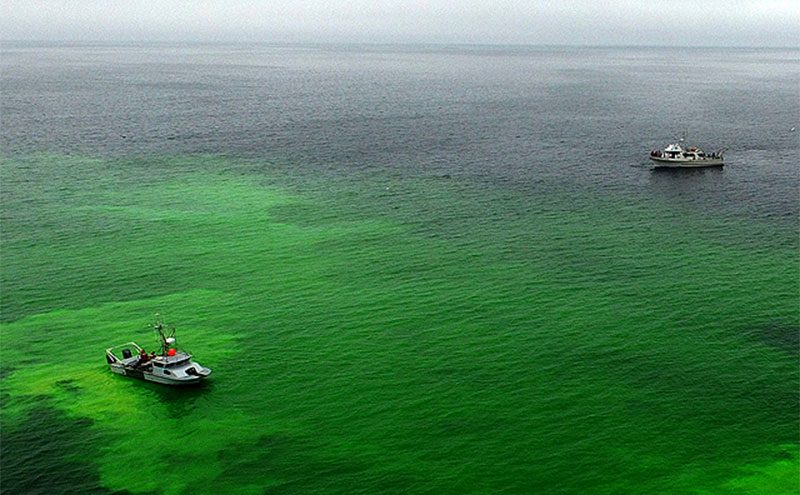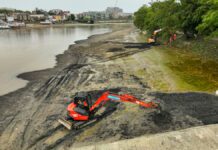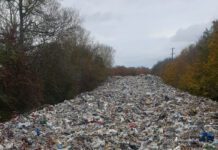The challenge of tracking underwater oil plumes is starting to be addressed by the use of autonomous underwater vehicles (AUVs). Recent months have seen a number of groups discussing experiments to evaluate this capability.

Reacting sensibly to an oil spill requires keeping track of its location. Spill response often relies upon information from satellites, as well as tracking with the help of radar, or monitoring it by sight from the deck of a ship. In this way, decisions can be made about the deployment of countermeasures, such as the use of dispersant chemicals.
One project that has generated a lot of interest is Enhanced Underwater Robotics Ready for Oil Spill (eURready4OS), which has been attempting to provide proof-of-concept for in-water oil detection using a fleet of autonomous vehicles – aerial, surface and underwater. The group, which is being led by Javier Gilabert of the Technical University of Cartagena, Spain, presented a paper at the Interspill conference in London in March 2018. Speaking to NewScientist in August, Gilabert mentioned how strangely oil can behave underwater – seemingly confounding expectation. In the case of the Deepwater Horizon spill in 2010, much of it didn’t rise directly from the ruptured well to the surface, but remained trapped in an underwater column, later coming to the surface “in unexpected places”.
The eURready4OS project has sought to address this information deficit using AUVs equipped with instrumentation like fluorometers, able to detect oil, and thereby build up a three-dimensional image of an underwater plume.
Previous exercises have involved demonstrating the robot’s ability to detect a plume, such as a June 2017 demonstration in Cartagena, where it was able to detect a spill of the dye rhodamine – used for its similar properties to oil – deployed at a depth of 17m. This demo involved the use of five AUVs (from different manufacturers), in addition to one autonomous surface vehicle (ASV), an unmanned aerial vehicle (UAV), and a boat.
Some of the challenges at present involve communication, allowing the AUVs to keep track of their own position and communicate their findings back to a central point. At present the group uses a Wifi network supported by floating stations.
GPS doesn’t work underwater, but other instruments could support navigation. The size of robot is a factor here, as larger AUVs can be equipped with things like Doppler velocity logs, to accurately determine their own position.
In previous demonstrations, the group has operated from a ship equipped with the capability to remain still in the water. Gilabert’s team recently stepped up the difficulty level with these experiments by operating from a navy vessel designed for speed rather than stability. This presented something more like real-world conditions, but also greater risks – on two occasions the ship lost contact with the AUVs, due to mechanical vibration of the antennas as they were rocked. Speaking to NewScientist, the group suggested ways of overcoming such difficulties – possibilities like the use of a static balloon as a communications base station. The AUVs could be programmed to simply head for shore, on completion of their work.
In September, a group from the Monterey Bay Aquarium Research Institute (MBARI) released details of a recent study it conducted with the US Coast Guard and collaborators at Woods Hole Oceanographic Institution (WHOI).
On-board fluorometers were also used here to detect the presence of the simulated oil plume (again, a non-toxic and biodegradeable dye was used). A particular priority with this study was to demonstrate the use of underwater robots that can find and track oil spills under ice – a capability whose importance is being anticipated as oil exploration begins in the Arctic ocean. And so the AUV in these experiments carried instruments to allow the vehicle to navigate beneath sea ice by bouncing sound waves off the underside of the ice.
The test was conducted in Monterey Bay, and the AUV was placed in the water and sent toward the plume. After instruments on the AUV detected the plume, the robot continued on its path, measuring the concentrations of dye within the plume and recording the areas of highest intensity. When the robot crossed the outer edge of the plume, it automatically turned around and headed back toward the plume.
By doing this repeatedly, the robot was able to track the plume as it drifted through the water for several hours. This test showed that the robot could meet the Coast Guard’s initial goals for the vehicle, according to an article on the MBARI website.
The current vogue for AUVs is partly attributed to the maturation of technologies like compact lithium polymer batteries, low cost sonar and 3d printing for parts.






